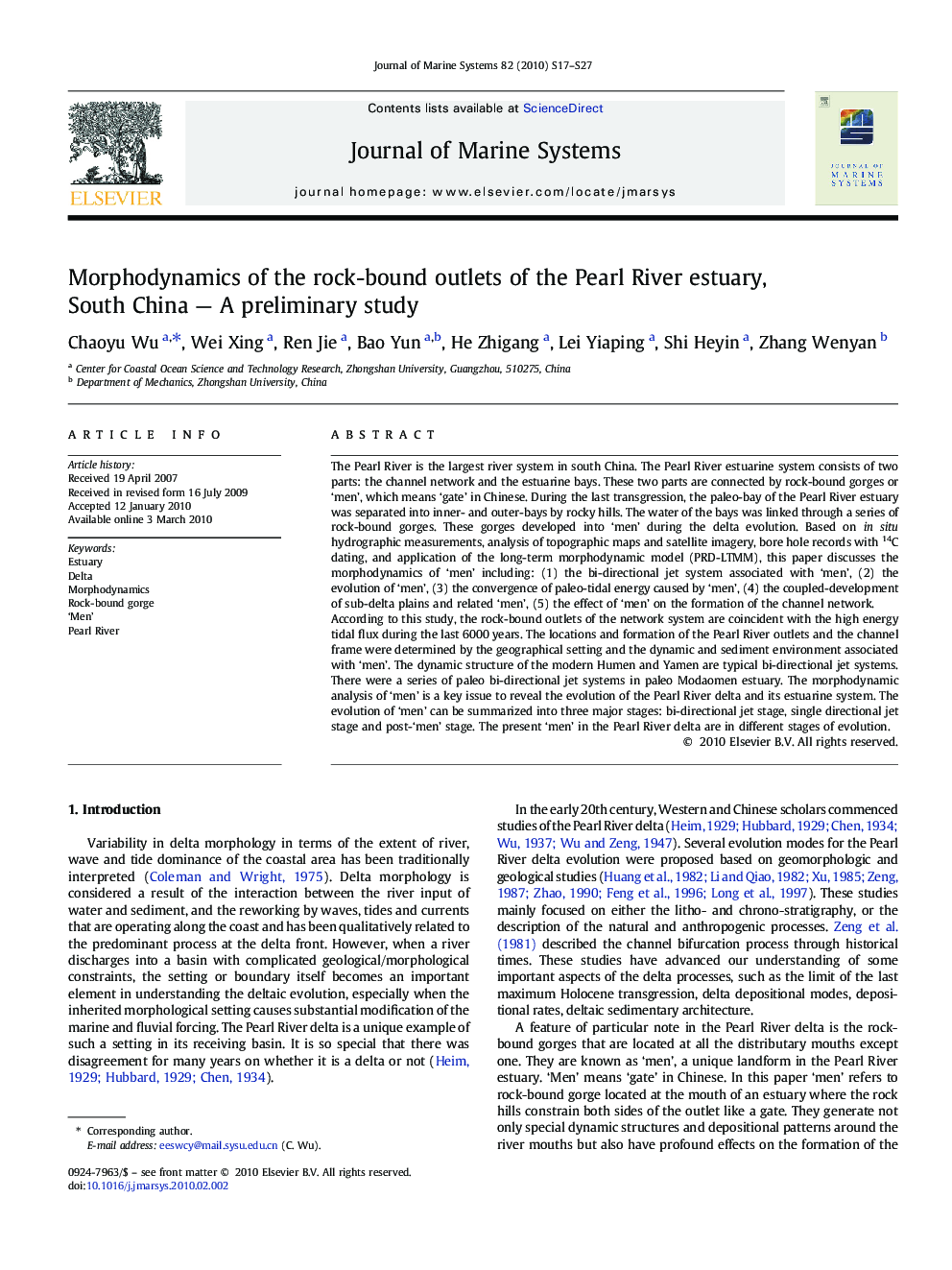| Article ID | Journal | Published Year | Pages | File Type |
|---|---|---|---|---|
| 4548378 | Journal of Marine Systems | 2010 | 11 Pages |
The Pearl River is the largest river system in south China. The Pearl River estuarine system consists of two parts: the channel network and the estuarine bays. These two parts are connected by rock-bound gorges or ‘men’, which means ‘gate’ in Chinese. During the last transgression, the paleo-bay of the Pearl River estuary was separated into inner- and outer-bays by rocky hills. The water of the bays was linked through a series of rock-bound gorges. These gorges developed into ‘men’ during the delta evolution. Based on in situ hydrographic measurements, analysis of topographic maps and satellite imagery, bore hole records with 14C dating, and application of the long-term morphodynamic model (PRD-LTMM), this paper discusses the morphodynamics of ‘men’ including: (1) the bi-directional jet system associated with ‘men’, (2) the evolution of ‘men’, (3) the convergence of paleo-tidal energy caused by ‘men’, (4) the coupled-development of sub-delta plains and related ‘men’, (5) the effect of ‘men’ on the formation of the channel network.According to this study, the rock-bound outlets of the network system are coincident with the high energy tidal flux during the last 6000 years. The locations and formation of the Pearl River outlets and the channel frame were determined by the geographical setting and the dynamic and sediment environment associated with ‘men’. The dynamic structure of the modern Humen and Yamen are typical bi-directional jet systems. There were a series of paleo bi-directional jet systems in paleo Modaomen estuary. The morphodynamic analysis of ‘men’ is a key issue to reveal the evolution of the Pearl River delta and its estuarine system. The evolution of ‘men’ can be summarized into three major stages: bi-directional jet stage, single directional jet stage and post-‘men’ stage. The present ‘men’ in the Pearl River delta are in different stages of evolution.
